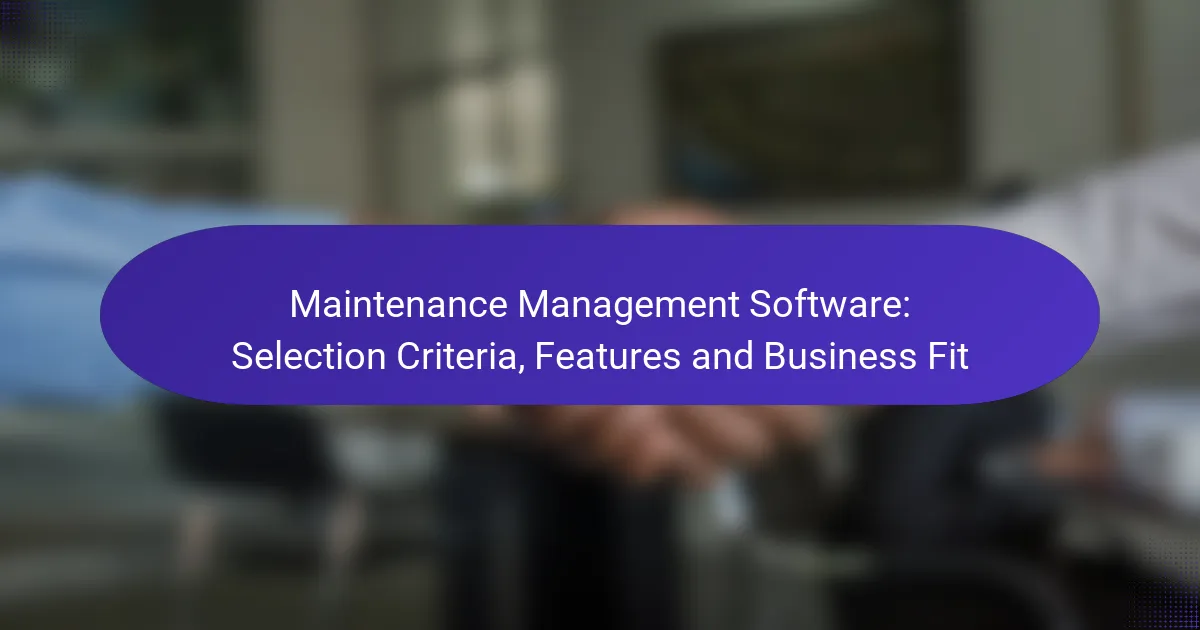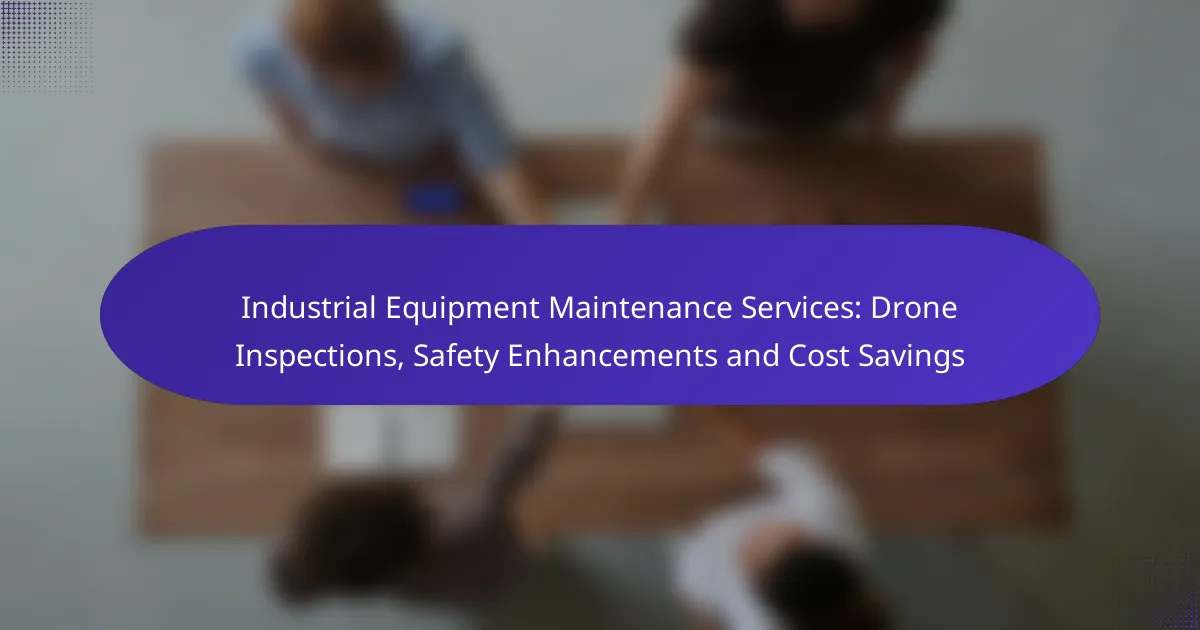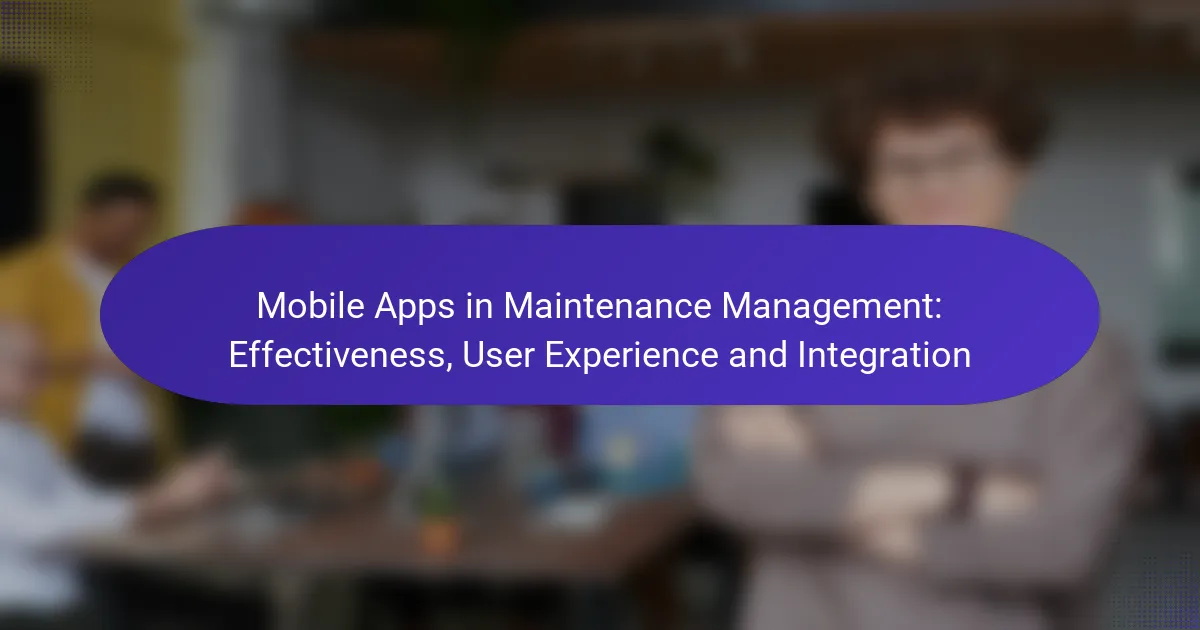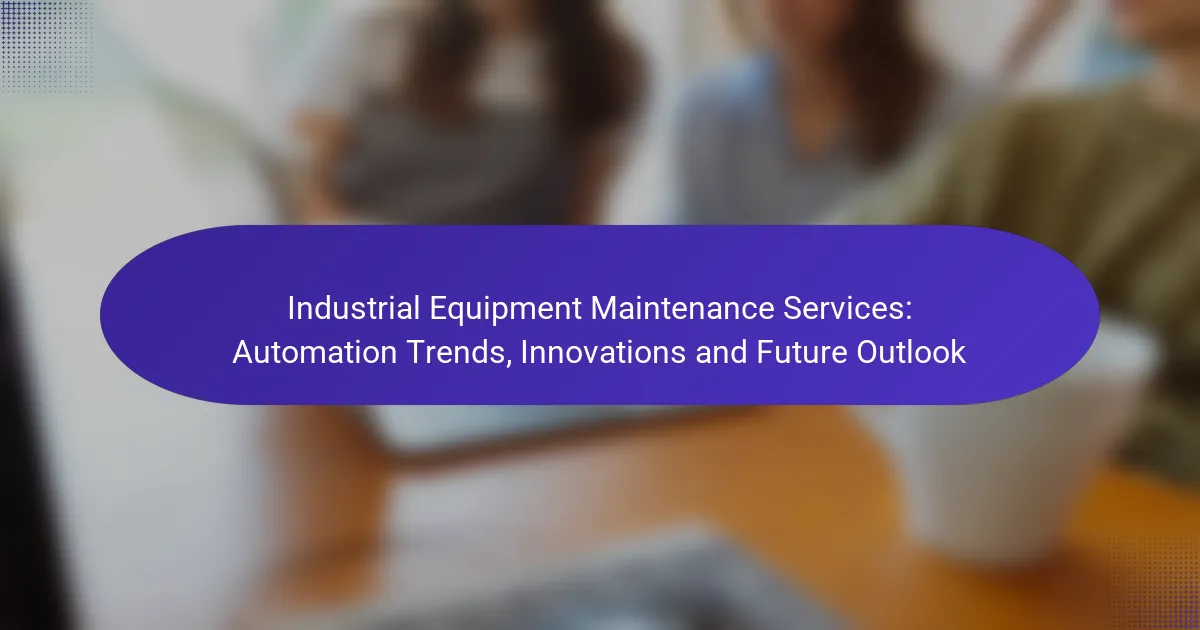Selecting the right maintenance management software is crucial for optimizing operations and enhancing productivity within your organization. With various options available, such as UpKeep, Fiix, and Hippo CMMS, it’s essential to evaluate features like work order management, asset tracking, and preventive maintenance scheduling to ensure a good fit for your business needs. A well-chosen solution not only streamlines processes but also significantly reduces downtime and improves overall maintenance performance.

What are the best maintenance management software solutions?
The best maintenance management software solutions streamline operations, enhance productivity, and reduce downtime. Key options include UpKeep, Fiix, Hippo CMMS, Maintenance Connection, and eMaint, each offering unique features tailored to various business needs.
UpKeep
UpKeep is a mobile-first maintenance management software that allows users to manage work orders, track assets, and schedule preventive maintenance on-the-go. Its user-friendly interface is particularly beneficial for teams that require real-time updates and communication.
Consider UpKeep if your organization prioritizes mobile access and ease of use. It is suitable for small to mid-sized businesses looking to improve their maintenance processes without extensive training.
Fiix
Fiix offers a comprehensive solution with features like work order management, asset tracking, and inventory management. It integrates well with other systems, making it a good choice for businesses that need to connect maintenance data with other operational areas.
When evaluating Fiix, think about your integration needs and the complexity of your maintenance operations. It is ideal for medium to large enterprises that require robust reporting and analytics capabilities.
Hippo CMMS
Hippo CMMS is known for its customizable dashboards and user-friendly design, making it easy for teams to adapt the software to their specific workflows. It includes features such as preventive maintenance scheduling, work order tracking, and asset management.
This solution is particularly effective for organizations that need a tailored approach to maintenance management. Hippo CMMS is suitable for various industries, including healthcare and manufacturing, where compliance and asset tracking are critical.
Maintenance Connection
Maintenance Connection provides a cloud-based platform that focuses on asset management and work order tracking. Its strong reporting features help organizations analyze maintenance performance and make informed decisions.
Choose Maintenance Connection if your business requires detailed analytics and a focus on asset lifecycle management. It is well-suited for larger organizations that need to manage multiple facilities and complex maintenance operations.
eMaint
eMaint is a versatile maintenance management software that offers features like work order management, inventory control, and preventive maintenance scheduling. It is highly configurable, allowing businesses to tailor the software to their specific needs.
Consider eMaint if you are looking for a scalable solution that can grow with your business. It is particularly beneficial for organizations that require extensive customization and detailed reporting capabilities.
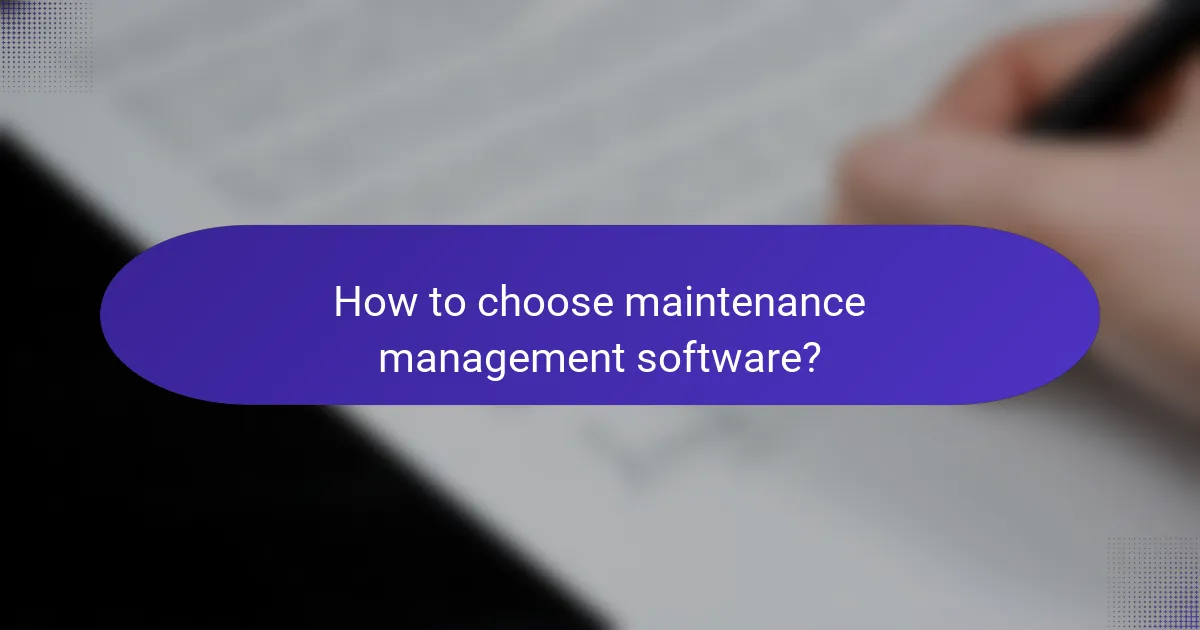
How to choose maintenance management software?
Choosing maintenance management software involves assessing your organization’s specific needs, evaluating usability, ensuring compatibility with existing systems, and verifying vendor support. A well-selected software solution can streamline operations, improve efficiency, and enhance overall maintenance performance.
Assess business needs
Start by identifying the key requirements of your maintenance operations. Consider factors such as the size of your organization, the complexity of your assets, and the specific maintenance tasks you need to manage. This will help you determine whether you need a basic solution or a more comprehensive system.
Engage stakeholders from different departments to gather insights on their needs. For example, maintenance teams may prioritize work order management, while finance may focus on cost tracking. Creating a list of must-have features versus nice-to-haves can guide your selection process.
Evaluate user-friendliness
User-friendliness is crucial for ensuring that your team can effectively utilize the software. Look for intuitive interfaces, easy navigation, and clear instructions. A system that requires extensive training may hinder adoption and reduce productivity.
Consider conducting trials or demos with your team to gauge their comfort level with the software. Collect feedback on usability and make sure the solution aligns with the technical skills of your staff. A user-friendly system can significantly enhance engagement and efficiency.
Consider integration capabilities
Integration capabilities are essential for seamless data flow between your maintenance management software and other business systems, such as ERP or inventory management. Check whether the software offers APIs or built-in connectors for easy integration.
Assess how well the software can work with existing tools. For instance, if you use a specific accounting software, ensure that the maintenance management solution can share data without manual entry. This reduces errors and saves time, ultimately improving operational efficiency.
Check vendor support
Reliable vendor support is vital for addressing issues and ensuring smooth software operation. Research the vendor’s reputation for customer service, including response times and availability of support channels such as phone, email, or live chat.
Inquire about the training and resources the vendor provides, such as user manuals, online tutorials, or community forums. Strong vendor support can significantly impact your experience with the software, especially during the implementation phase and beyond.
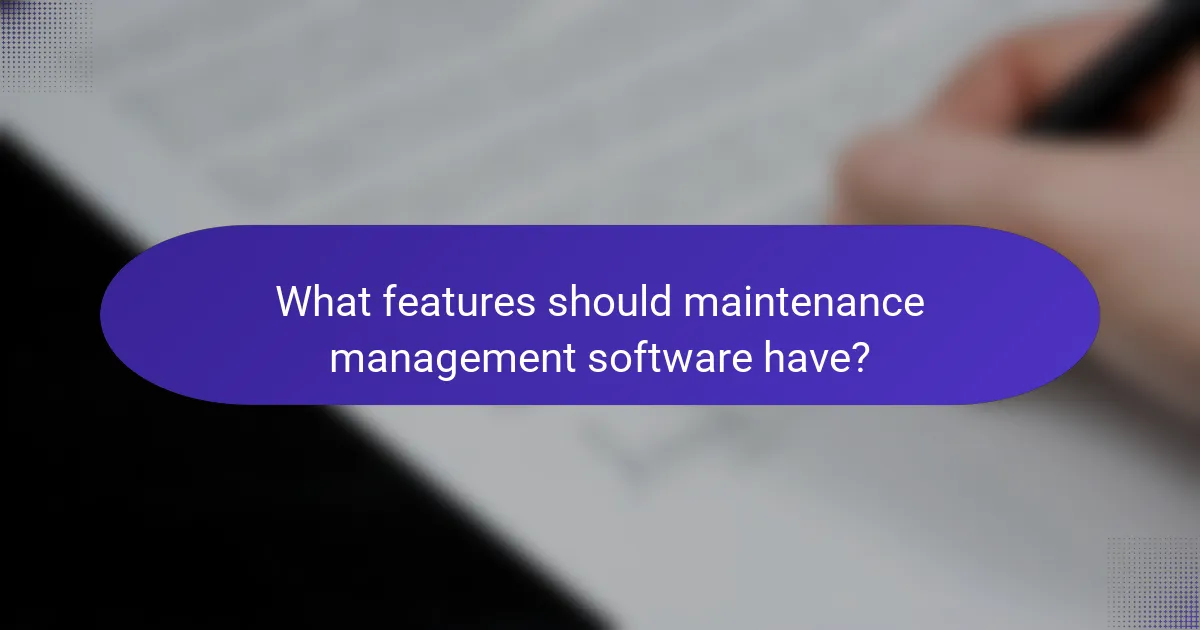
What features should maintenance management software have?
Maintenance management software should include essential features that enhance efficiency, streamline operations, and improve asset longevity. Key functionalities include work order management, asset tracking, preventive maintenance scheduling, and robust reporting and analytics capabilities.
Work order management
Work order management is crucial for tracking maintenance tasks from initiation to completion. This feature allows users to create, assign, and prioritize work orders, ensuring that maintenance activities are organized and timely.
When selecting software, look for options that offer automated notifications and status updates, which can significantly reduce response times. A good system should also allow for easy access to historical work order data, aiding in future planning and resource allocation.
Asset tracking
Asset tracking enables organizations to monitor the condition and location of their equipment and machinery. This feature is vital for maintaining an accurate inventory and ensuring that assets are utilized efficiently.
Consider software that provides real-time tracking through barcodes or RFID technology. This can help prevent loss and streamline maintenance schedules by ensuring that the right assets are available when needed.
Preventive maintenance scheduling
Preventive maintenance scheduling helps organizations proactively manage maintenance tasks to avoid unexpected breakdowns. This feature allows users to set up regular maintenance intervals based on usage or time, ensuring that assets remain in optimal condition.
Choose software that offers customizable scheduling options and reminders. This can help reduce downtime and extend the lifespan of equipment, ultimately saving costs in the long run.
Reporting and analytics
Reporting and analytics features provide insights into maintenance performance and asset health. These tools help organizations identify trends, track key performance indicators (KPIs), and make data-driven decisions.
Look for software that offers customizable reports and dashboards, allowing users to visualize data easily. Effective reporting can highlight areas for improvement and help justify maintenance budgets, making it a critical component of any maintenance management system.
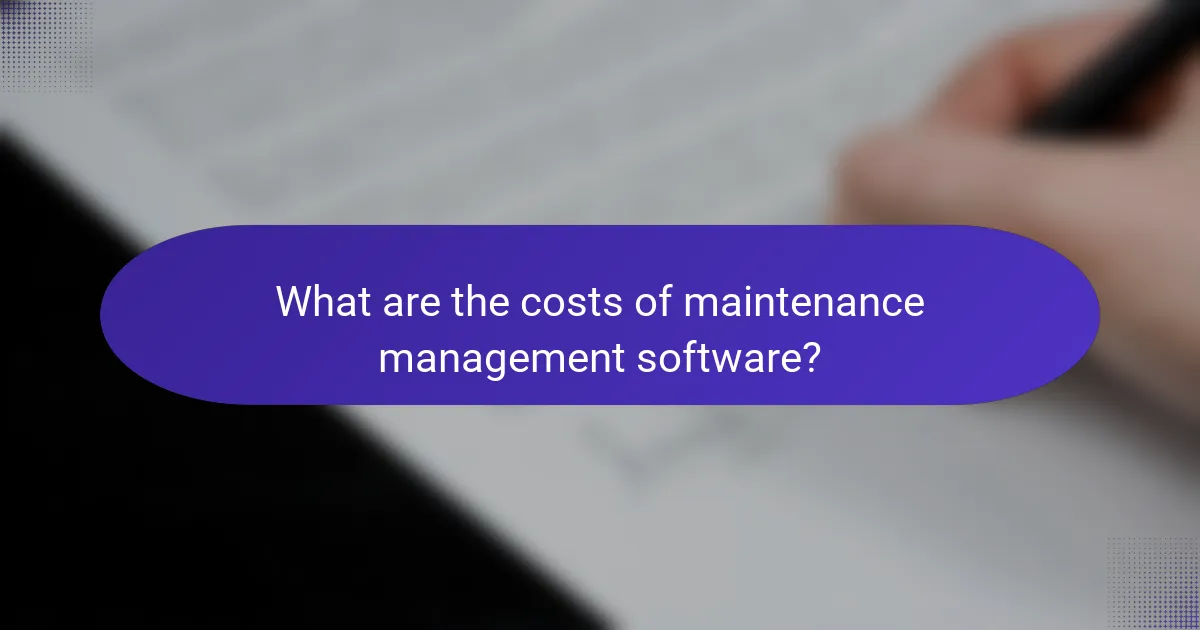
What are the costs of maintenance management software?
The costs of maintenance management software can vary significantly based on the pricing model, features, and implementation requirements. Businesses should consider both upfront and ongoing expenses to determine the total cost of ownership.
Subscription pricing models
Subscription pricing models typically charge businesses on a monthly or annual basis, allowing for predictable budgeting. These models often include tiered pricing based on the number of users or features, which can range from low tens of USD to several hundred USD per month.
When evaluating subscription options, consider the flexibility of scaling the service as your business grows. Some providers offer discounts for annual commitments, which can lead to significant savings over time.
One-time licensing fees
One-time licensing fees require an upfront payment for perpetual use of the software, which can range from a few thousand to tens of thousands of USD, depending on the complexity and capabilities of the system. This model may be more cost-effective for larger organizations with stable needs.
However, keep in mind that one-time fees often do not include ongoing support or updates, which may incur additional costs later. Businesses should assess their long-term needs and the potential for software upgrades before committing to this model.
Cost of implementation
The cost of implementation can vary widely based on the software’s complexity and the organization’s size. Implementation costs typically include setup, training, and integration with existing systems, which can add thousands of USD to the overall expense.
To minimize implementation costs, consider choosing software with user-friendly interfaces and robust support resources. Additionally, involving key stakeholders early in the process can help streamline training and adoption, reducing potential delays and extra costs.
